Simulator of Electromagnetic Measurement While Drilling (EM-MWD) for Vertical and Horizontal Wells
The simulator of electromagnetic measurement while drilling The simulator of electromagnetic measurement while drilling (EM-MWD) is based on the numerical solution of Maxwell equations. Based on the parameters of provided transmitter, well configuration and the resistivity log it will calculate the useful signal received on the surface, allowing the client to determine feasibility of utilizing EM-MWD on a given well and to select the optimal transmitter and receiver parameters. There are separate versions of the simulator for vertical wells and for horizontal and inclined wells.
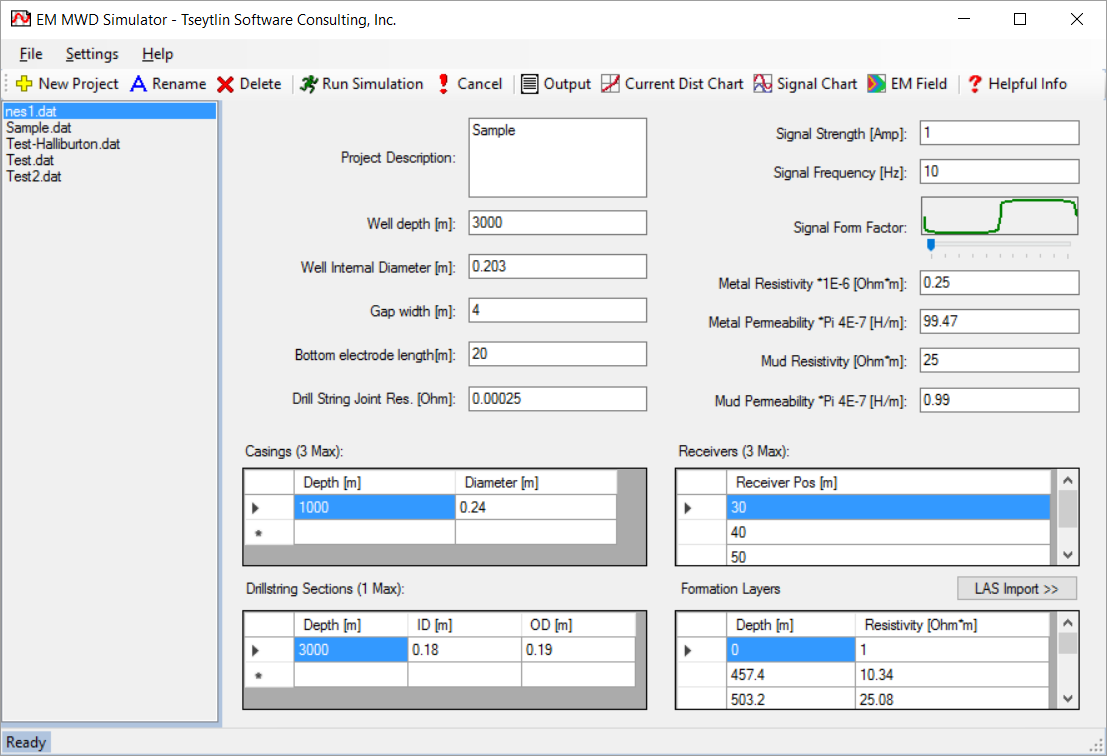
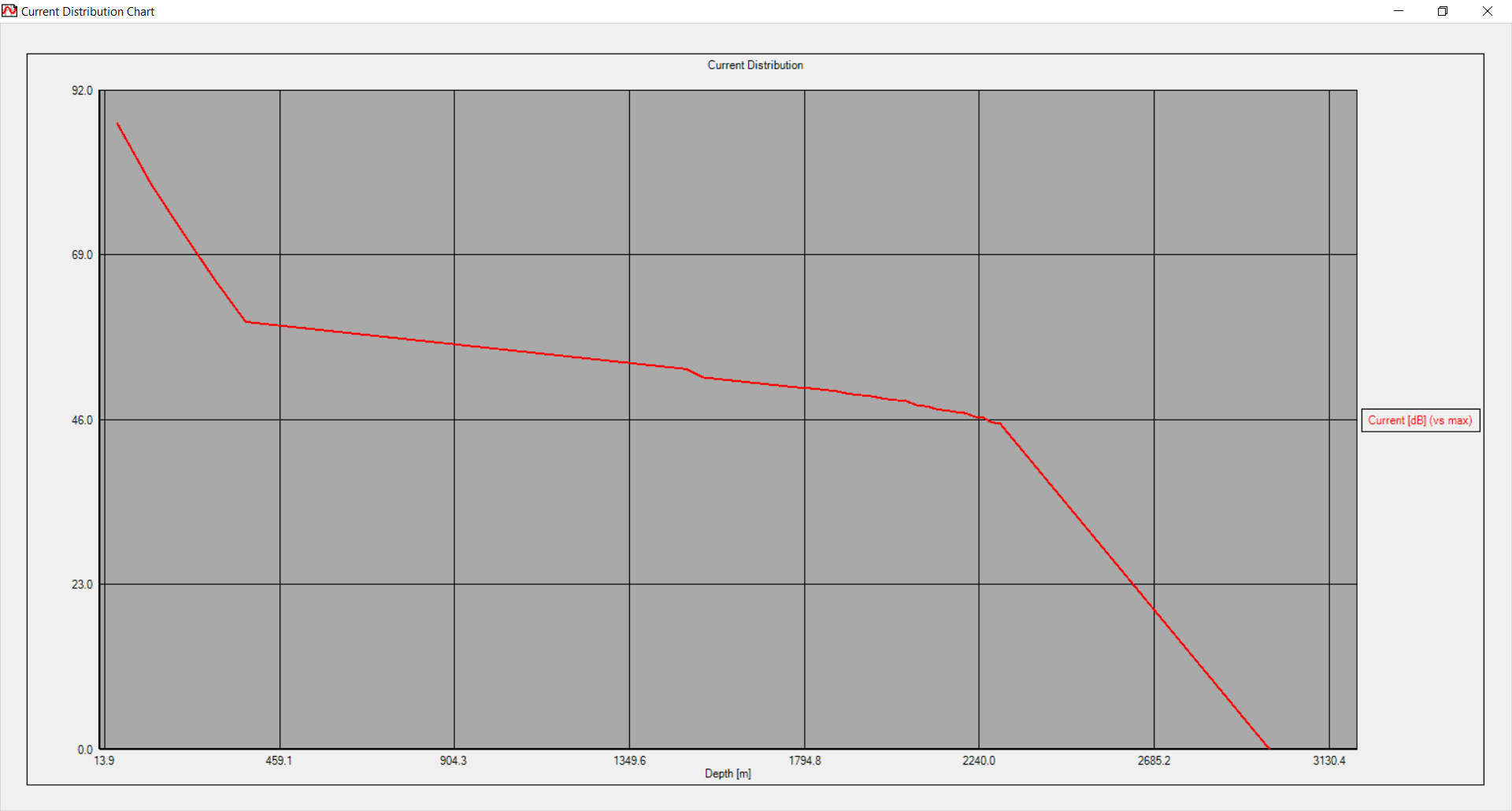
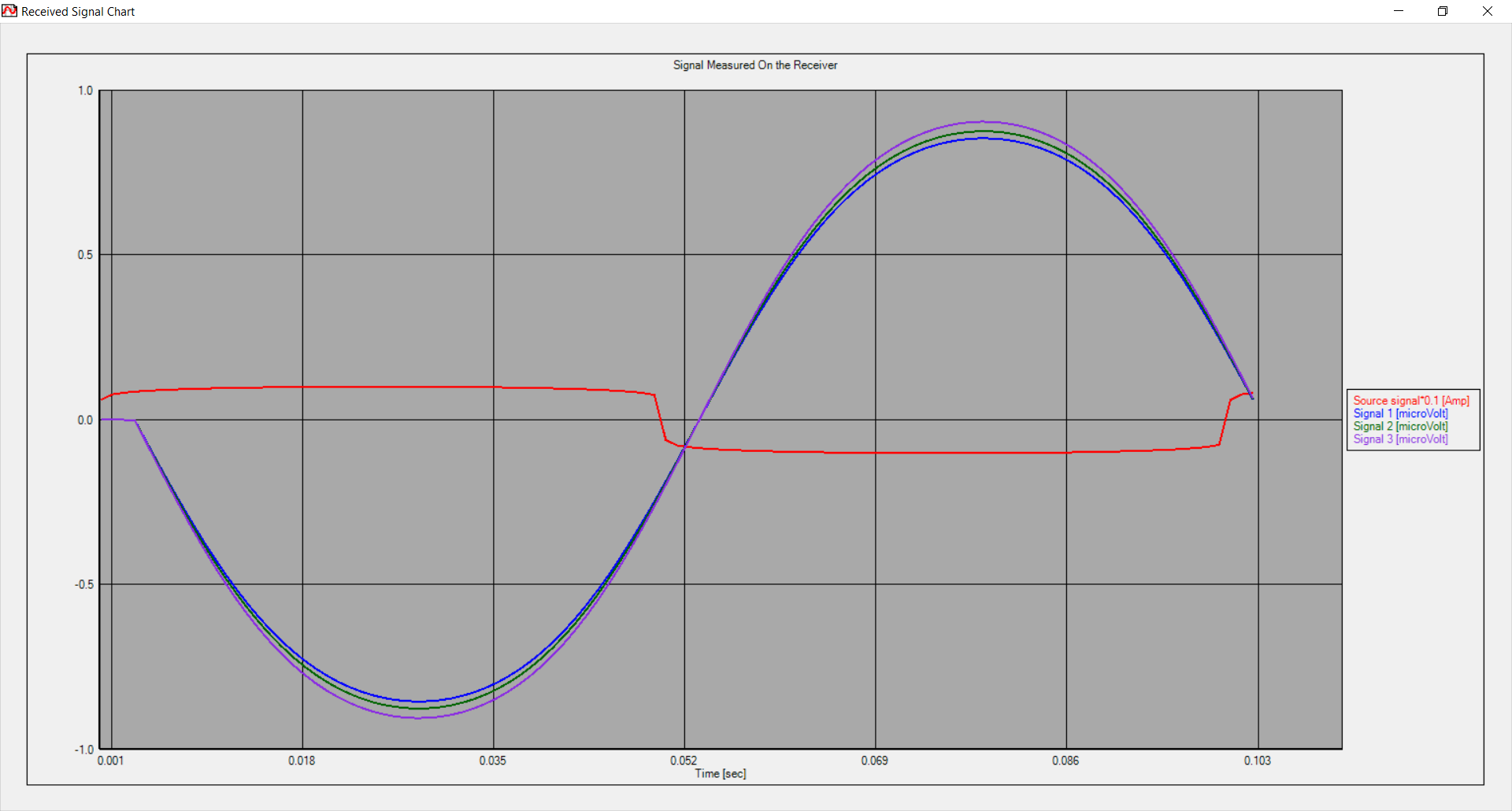
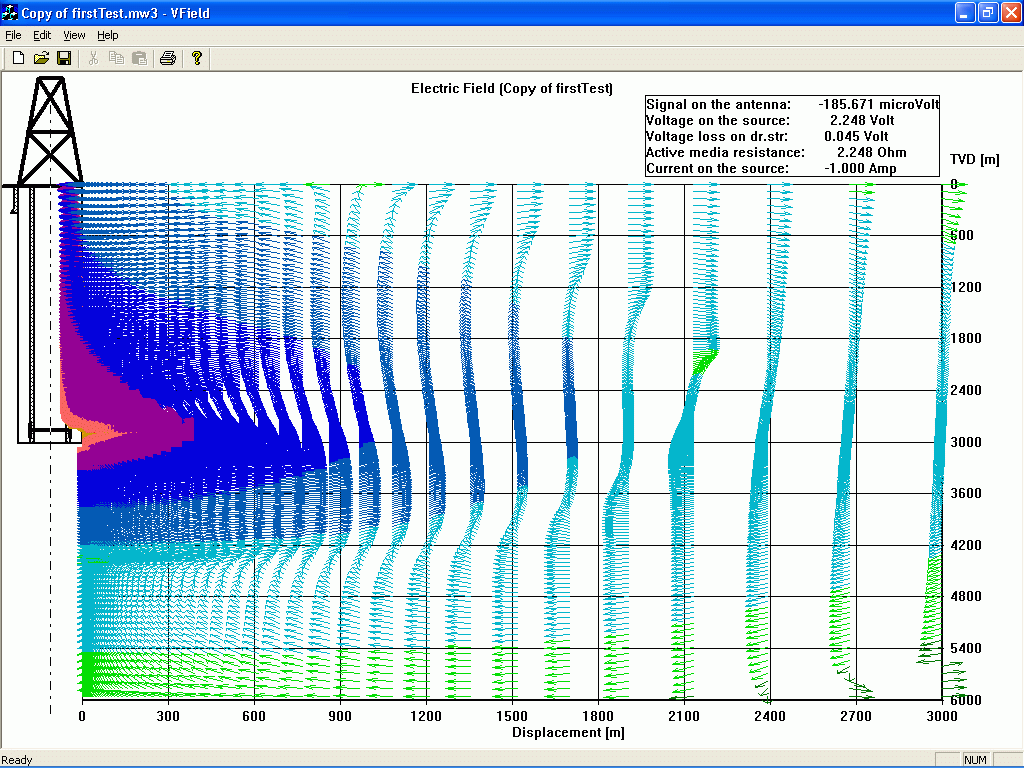
|
Simulator of Tripping Operations
The simulator allows to determine the hydrodynamic component of pressure at any point in borehole during tripping, accounting for borehole geometry and drilling column composition, fluid compressibility (with borehole walls elasticity), mud features and rheology, drilling column velocity, acceleration and deceleration.
It can be used to determine optimal mode of column tripping in order to dectrease hydraulic fracturing risk, reduce the invasion zone and prevent borehole wall erosion.
The simulator allows to significantly decrease the possibility of accidents while drilling and to accelerate borehole building and significantly increase efficiency and safety of drilling.
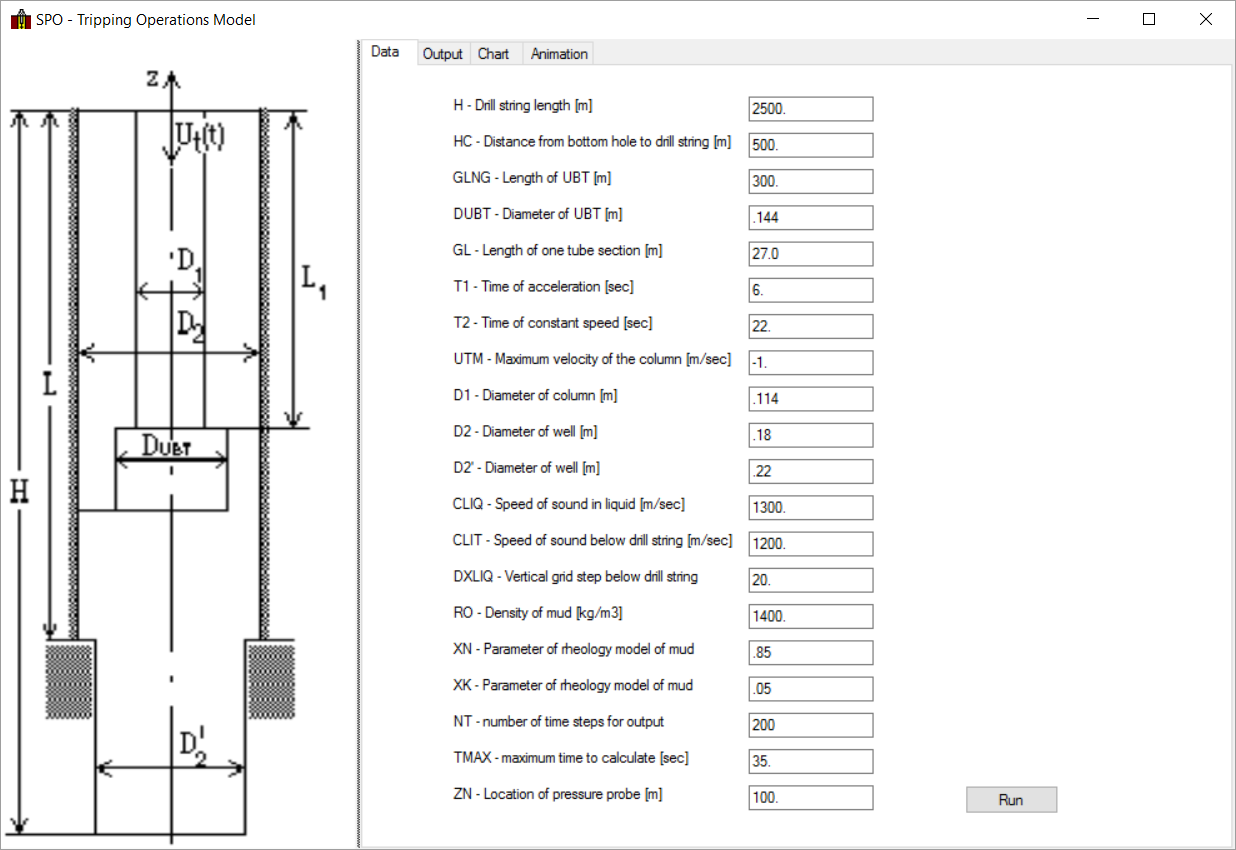
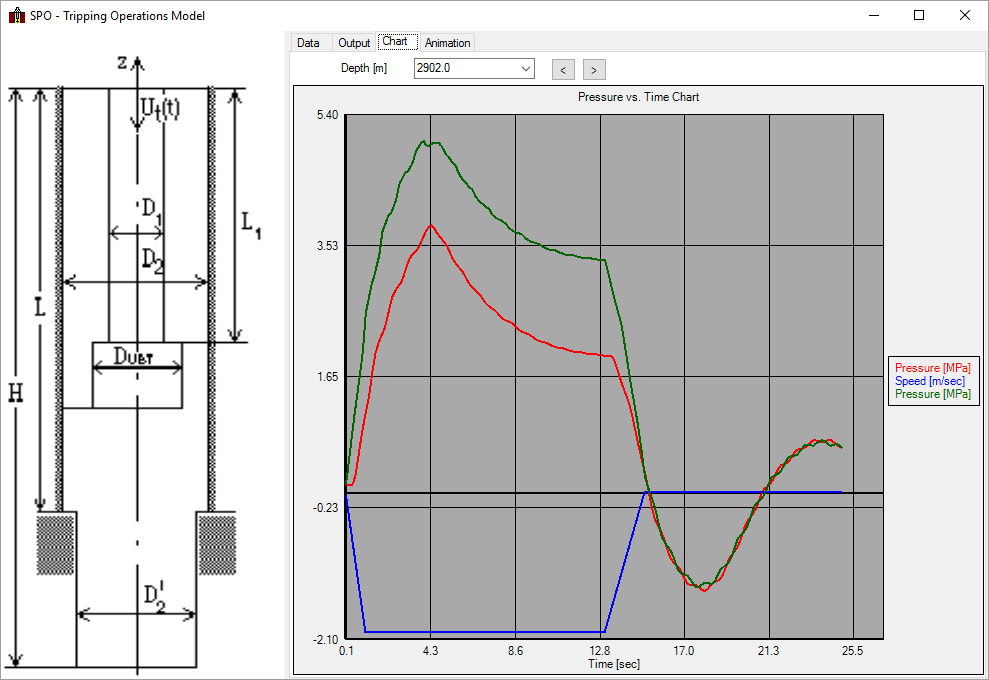
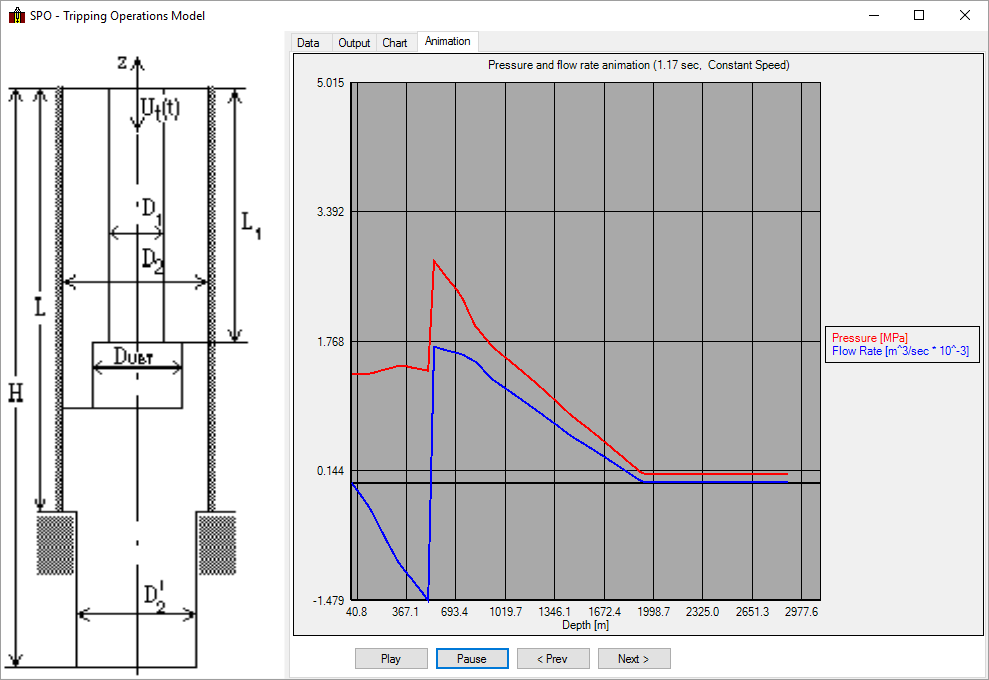
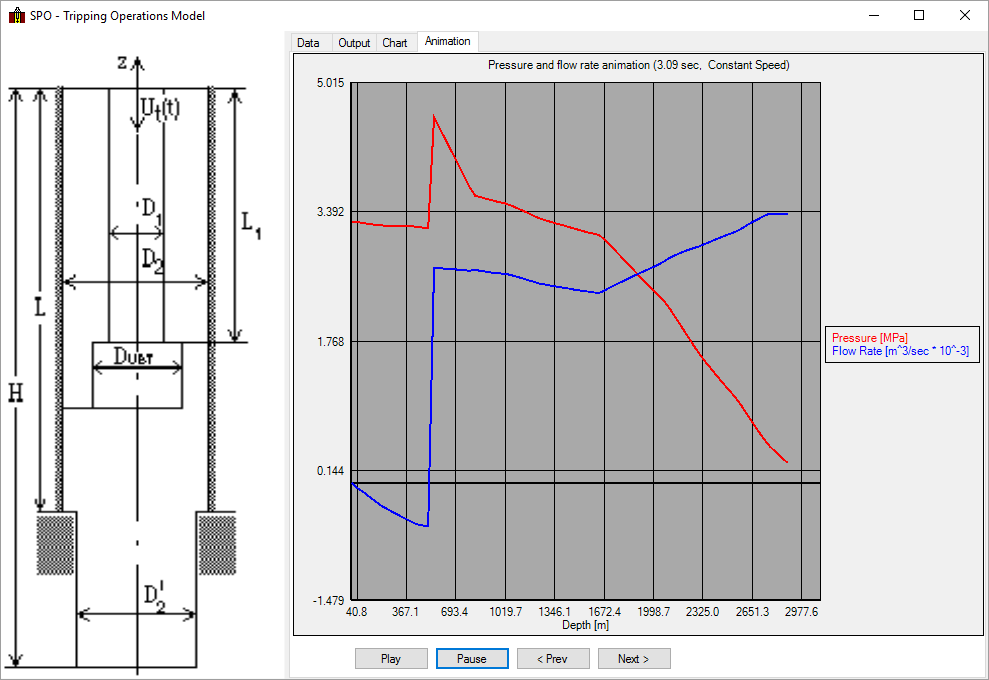
|
Simulator of Technology for Optimization of Production (TOP)
This method allows receiving maximum current oil rate, extending life of the well and increasing its oil recovery index by keeping current bottomhole pressure on the optimum level, which is continuosly calculated using a special mathematical model, and depends on the current properties of the system well-formation and the properties of formation and fluid.
Maximum oil rate is achieved by maintaining formation is such a mode, as to minimize negative effects in the bottomhole area, which appear due to free gas, which separates from oil, blocking oil flow, and due to forming of zones of sluggish, viscous degassed oil. Application of this method also decelerates pressure drop in formation by lessening premature exiting of gas from formation, and decreases current value of GOR. This leads to extended life of well and increased ultimate production index.
The method applies to all oil production methods, such as fountain, gas-lift and pump, and allows receiving millions of additional barrels of oil without drilling any extra wells or building any additional expensive platforms for offshore wells.

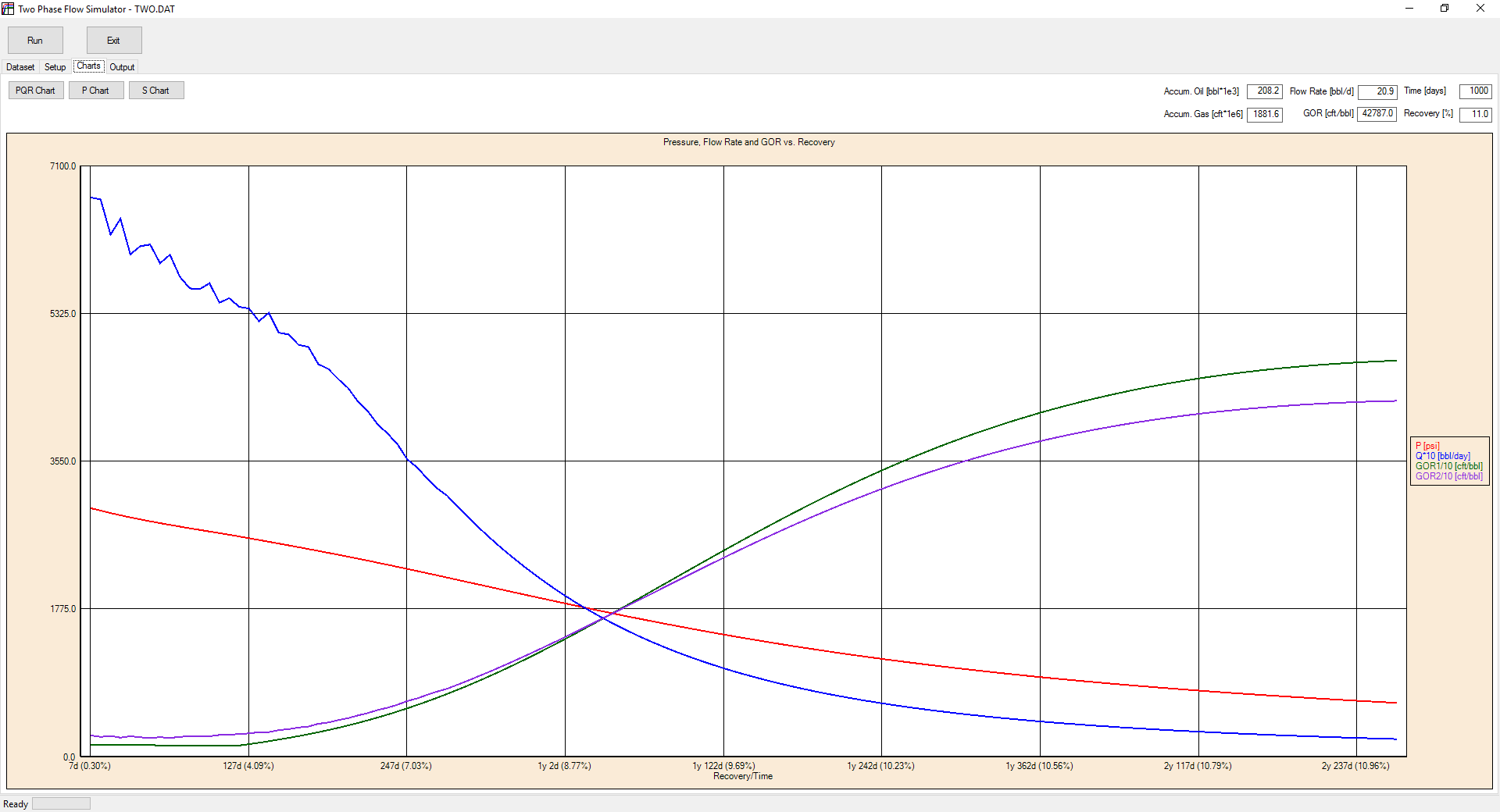
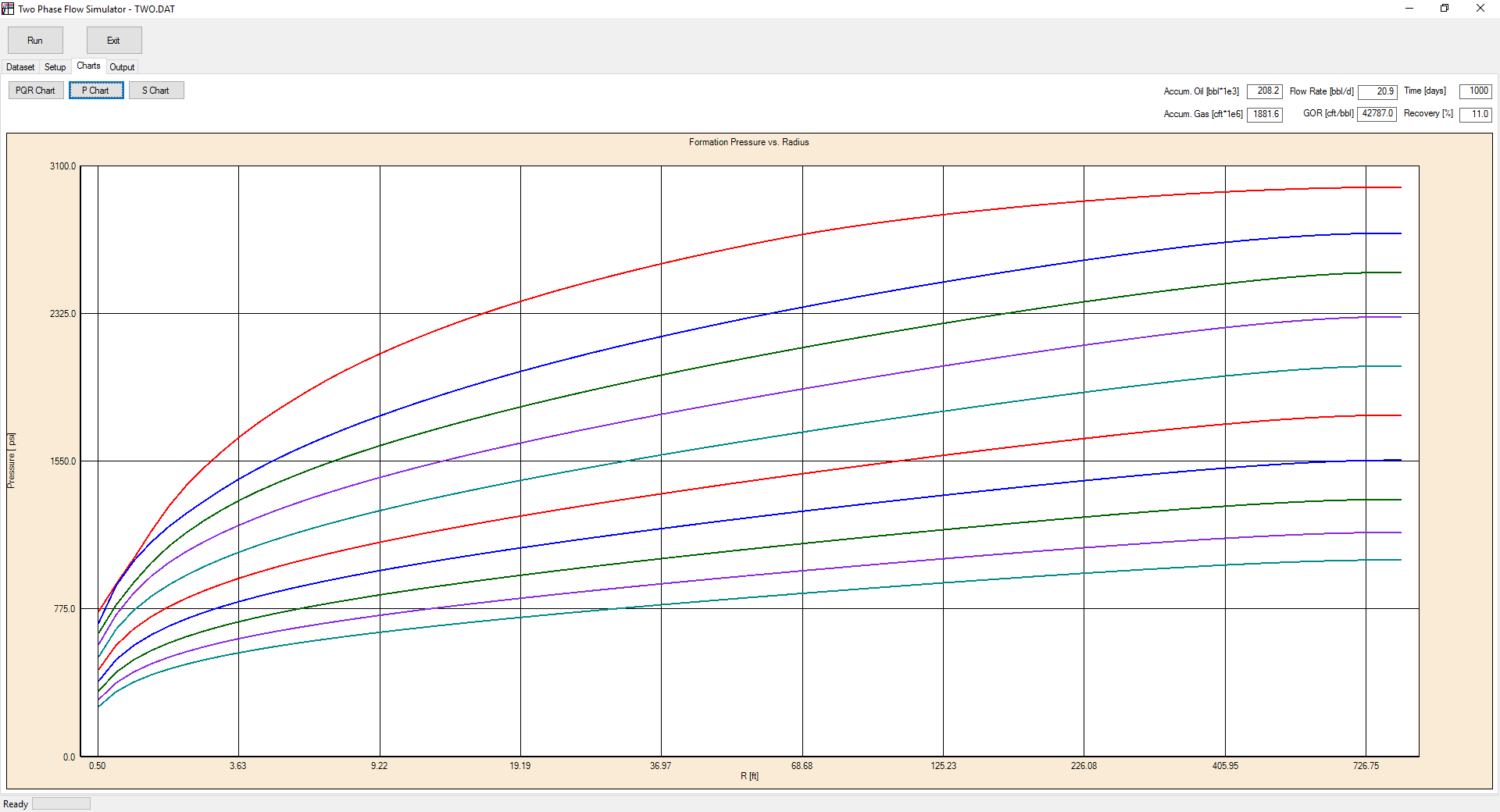
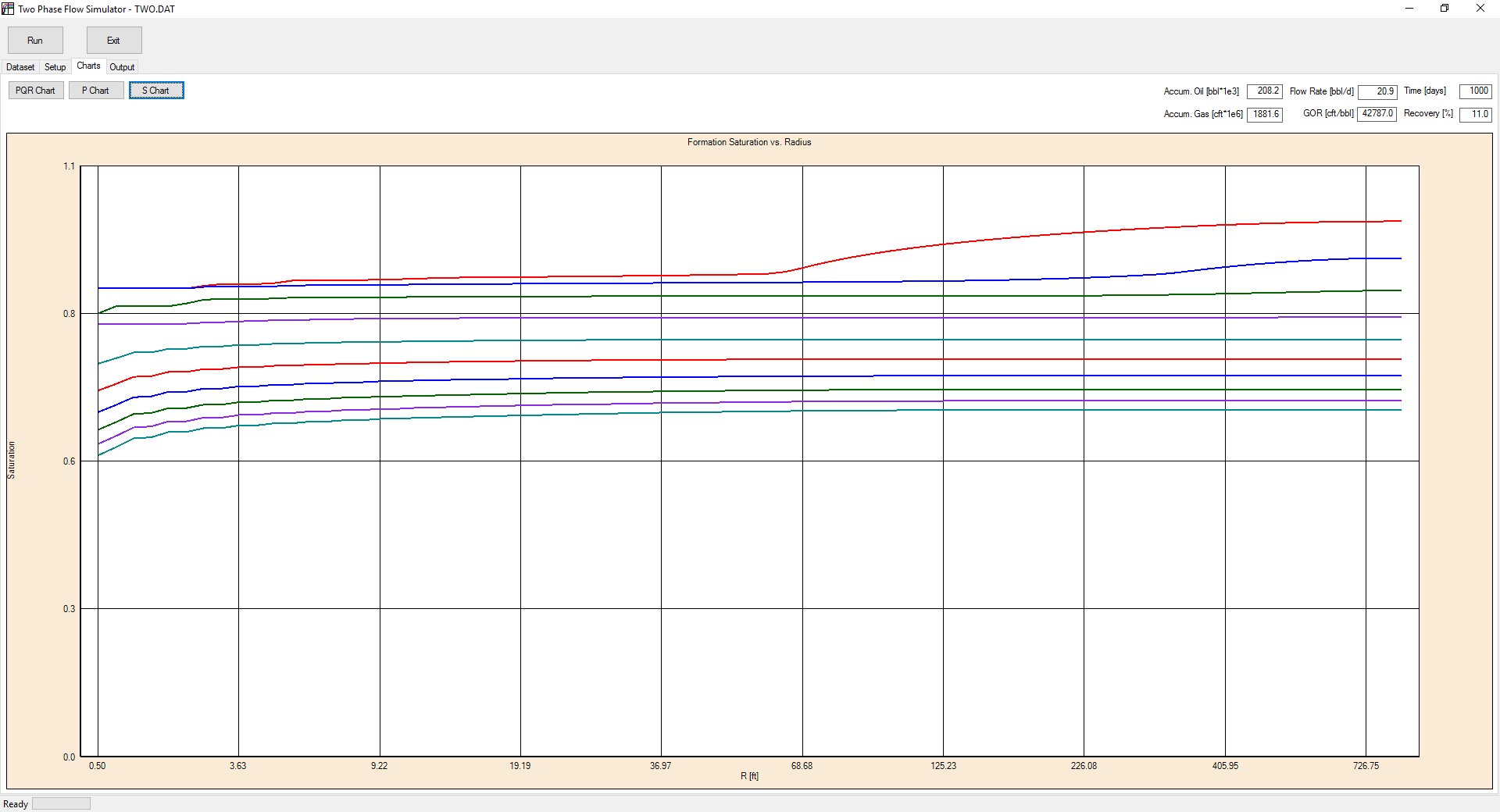
|